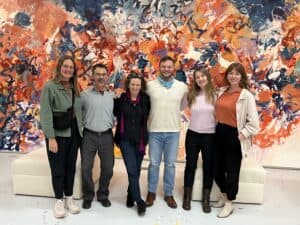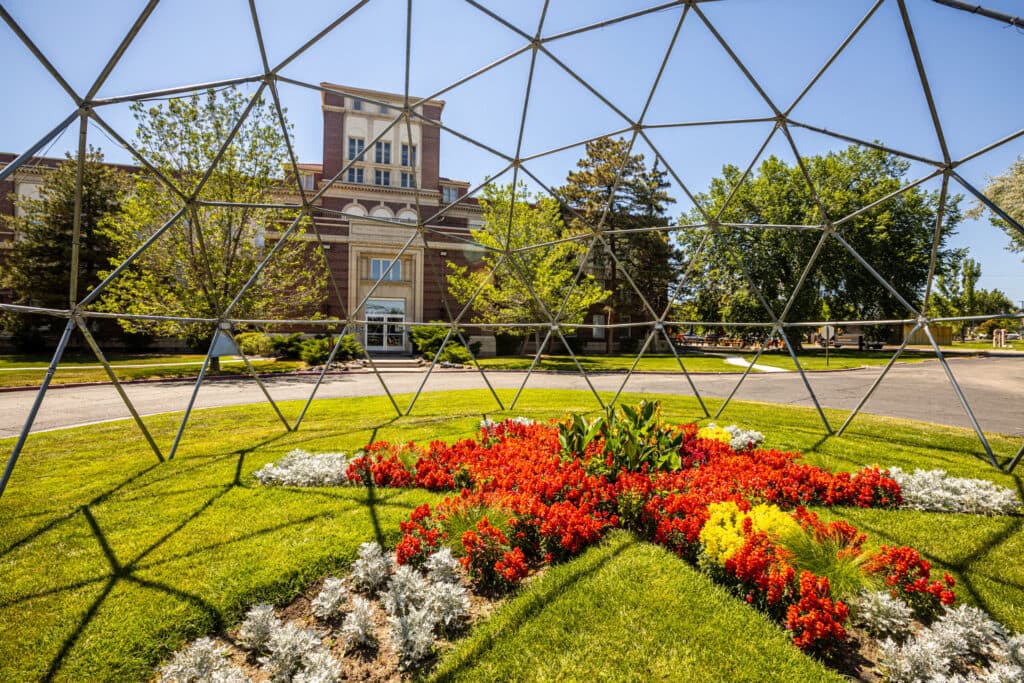Being an artist in residence is a unique career-building opportunity many artists pursue. However, what residencies are and where to find them aren’t the easiest answers to find. Luckily, Fine Arts and Foundations faculty, Gretchen Schaefer is here to shed some light on the topic. Schaefer has been at RMCAD for over 10 years as the VASD Program Director and the Director of Creative Programming. As such, she has a lot of experience making, critiquing, and advocating for art. In June of 2024, Schaefer returned from a three-week artist residency in Wyoming’s Bighorn Mountains and shared her experience.

Q: What is an artist residency?
A: There are lots of different types of art residency programs out there, so they can vary a lot depending on the organization’s goals. Generally, they offer time and studio space for artists of all kinds to focus on their artwork. There are residencies for all kinds of artists: visual artists, choreographers, writers, directors, curators, and just about any other creative field. Residencies are usually in a community of other artists or you can also be alone. Some are free, and some you have to pay for. Residencies can last a short period or they can last two years. They can be so many different things, but they are all designed to remove artists from their day-to-day to make their work.

Q: What can you tell us about your residency?
A: I was an artist in residence in Banner, Wyoming at the Jentel Foundation Artist Residency. I focused just on drawing. By narrowing it down, I was more productive in exploring my ideas. I made five drawings that I’m really proud of and love. I drew some things I’ve wanted to draw for a long time. My goal wasn’t about production. It was more about thinking and habits. I think there can be freedom in discipline. Putting guardrails around my process actually opened up tons of possibilities.
Q: What was the most important thing you learned from your residency?
A: My residency was in a very remote town. I didn’t have cell service unless I hiked a mile up a hill and the Wi-Fi was spotty, so it was a digital detox. A lot of my time there, I wanted to remove distractions. I had to slow down and disconnect, and I discovered things in that quiet. I discovered how influential other artwork was to my art, like the movies, TV, and especially social media. Sometimes those voices crowded out my ability to hear my own creative voice.

Q: Should other artists apply to be an artist in residence?
A: I would start by taking a step back and asking yourself, what are your goals – personally, professionally, and artistically? I would never tell anybody that there’s only one path to be an artist. If a residency seems to be the right thing for you, then great! Start researching residencies and find out which ones align with your goals. When you find the right opportunity that matches your needs, then build your portfolio. Make art that feels honest and true to you. Find the right residency that is a good fit, don’t force your work in a direction just to get a residency.
Q: How do you get an artist residency?
A: You will have to apply to a lot of opportunities, and you may not get into everything, but that is not a reflection on you. Oftentimes, there are so many submissions that jurors can only spend seconds looking at your artwork, which you can’t do anything about. However, jurors can also change from year to year. So just know that if the jurors didn’t select you one year, that doesn’t mean that it’s the same people looking the next year. My most important residency application tip is to make work that is authentic to yourself, then go after things you really want, and keep going even if you get rejected.
Q: Where can you apply for an artist’s residency?

A: I would recommend that students interested in emerging artist residencies talk with their department faculty to find the appropriate residencies in their field. For visual artists, I recommend CaFE, they have a lot of different art residency programs, art residency grants, and exhibition opportunities. Another great resource is the Artist Communities Alliance, which is a non-profit organization that highlights a long list of opportunities. Lastly, you can start by Googling artists in residence but be sure to do your research!”
Residencies aren’t the only way to learn – Join our community of creatives!
Interested in becoming an artist? Take a look at RMCAD’s 11 programs available both on campus and online. To learn even more about residencies from another professor, check out Two Weeks and One Remarkable Residency in the Arctic for a RMCAD Professor.
Many of the quotes in this story have been edited for brevity and clarity by the author, but are meant to retain the significance and purpose of the original speaker.

